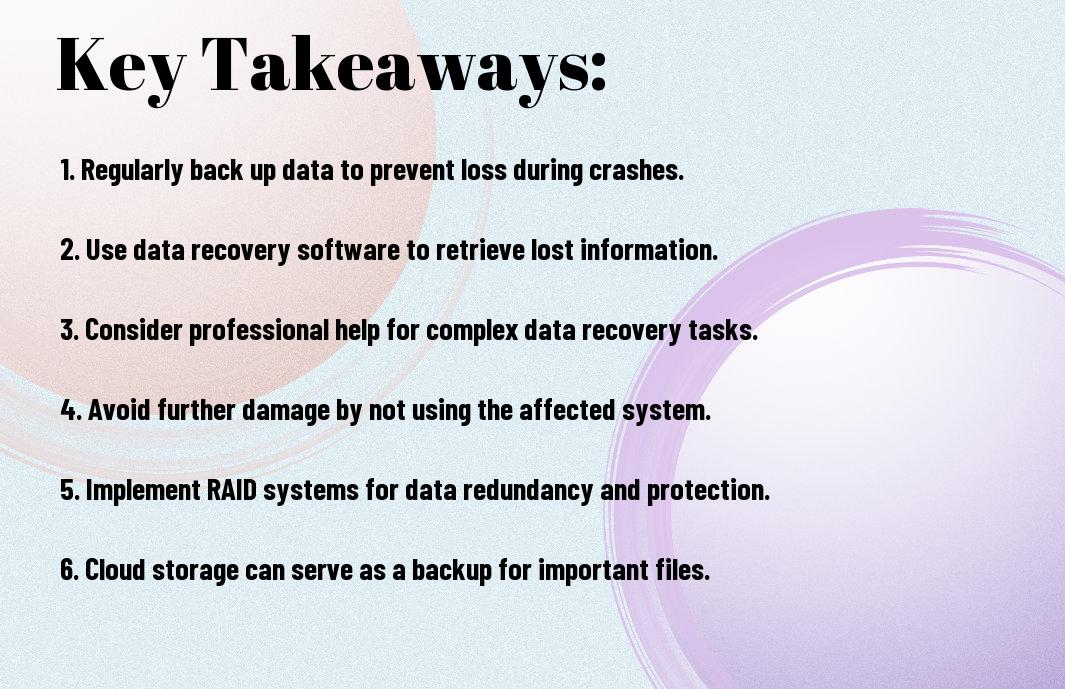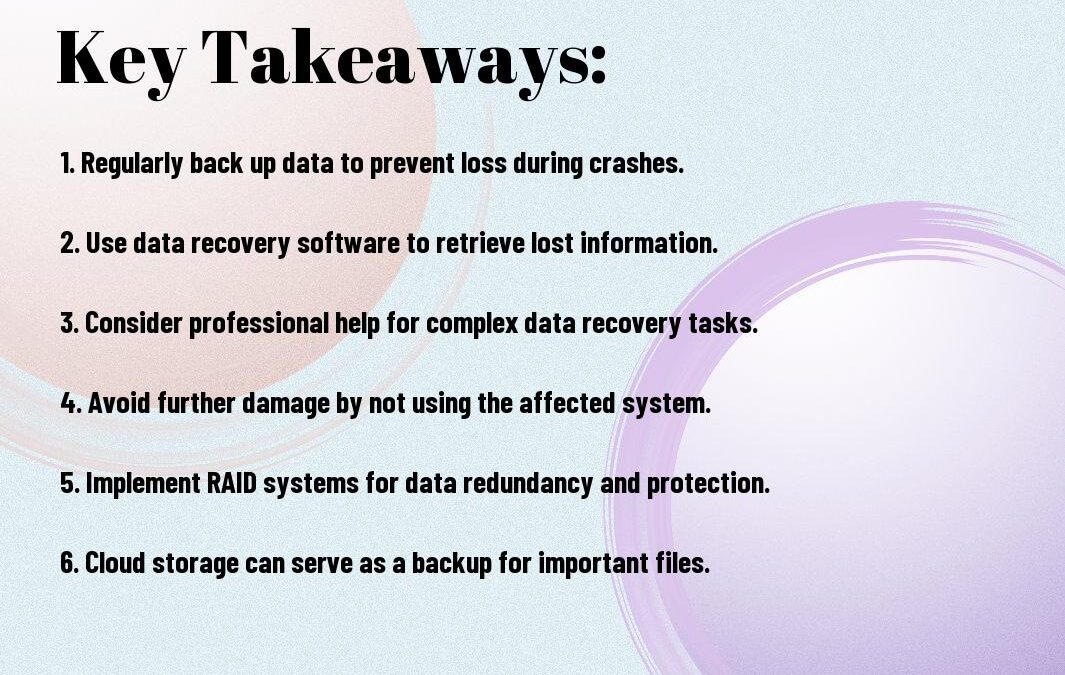Over the years, data retrieval after a system crash has been a daunting task for many users. In this informative blog post, we will explore the potential foolproof methods that can help you recover your important data effectively. Understanding these techniques can be crucial in ensuring the safety and accessibility of your valuable information in case of unforeseen system failures.

Causes of Data Loss
Hardware Failure
The most common cause of data loss is hardware failure. Any malfunction in the physical components of a computer system, such as the hard drive, memory chips, or power supply, can lead to loss of data.
Software Corruption
Loss of data due to software corruption is another prevalent issue. Any software errors, viruses, or malware attacks can corrupt the data stored on the system, making it inaccessible or rendering it unusable.
The implications of software corruption can be severe, as it can affect not only individual files but also the entire operating system. It is necessary to have robust antivirus software and regular data backups to mitigate the risks associated with software corruption.
Methods for Data Retrieval
Backup and Recovery Systems
Even in the event of a system crash, having robust backup and recovery systems in place can be a lifesaver. One can ensure the safety of their data by regularly backing up important files on external drives or cloud storage. This method not only helps in preventing data loss but also enables easy retrieval after a system failure.
Data Carving and File Reconstruction
Backup and recovery systems are effective for retrieving intact files, but what about fragmented or corrupted data? This is where data carving and file reconstruction techniques come into play. By scanning through the raw data on a storage device, lost or damaged files can be identified and reconstructed.
For instance, specialized software tools can be employed to search for file signatures and piece together fragmented data clusters to recover the maximum possible content. However, this method requires a certain level of expertise and may not guarantee complete retrieval of all files.
Advanced Techniques
All
-
Disk Imaging and Forensic Analysis
The process of disk imaging involves creating a bit-by-bit copy of the entire drive, including deleted files and partitions. Forensic analysis techniques can then be applied to the disk image to recover data that may not be accessible through traditional methods.
-
Professional Data Recovery Services
Recovery professionals have the expertise and specialized tools required to recover data from severely damaged or corrupted storage devices. They can handle complex data retrieval tasks that may be beyond the capabilities of typical software solutions.
Disk Imaging and Forensic Analysis
The process of disk imaging involves creating a bit-by-bit copy of the entire drive, including deleted files and partitions. Forensic analysis techniques can then be applied to the disk image to recover data that may not be accessible through traditional methods.
Professional Data Recovery Services
Recovery professionals have the expertise and specialized tools required to recover data from severely damaged or corrupted storage devices. They can handle complex data retrieval tasks that may be beyond the capabilities of typical software solutions. Another advantage of professional data recovery services is their ability to work with various types of storage devices, including hard drives, solid-state drives, and RAID arrays.
Prevention is the Best Medicine
Many data loss incidents can be averted by implementing proactive measures to protect your data.
Regular Backups and System Maintenance
The key to preventing significant data loss is regular backups and system maintenance. By creating backups of your important data and keeping your system up to date with the latest software updates and patches, you can minimize the risk of losing critical information in the event of a system crash.
Implementing Redundancy and Fault-Tolerance
System crashes can be mitigated by implementing redundancy and fault-tolerance in your data storage systems. By having redundant components and fail-safe mechanisms in place, you can ensure that your data remains accessible even if one part of your system fails.
Plus, by utilizing technologies such as RAID (Redundant Array of Independent Disks) or clustering, you can distribute your data across multiple drives or systems to increase data availability and protect against hardware failures.
Conclusion
Summing up, while there is no foolproof method for data retrieval after a system crash, implementing regular backups and utilizing professional data recovery services can greatly increase the chances of recovering lost information. It’s vital to take proactive measures to safeguard valuable data and minimize the impact of potential system failures.

